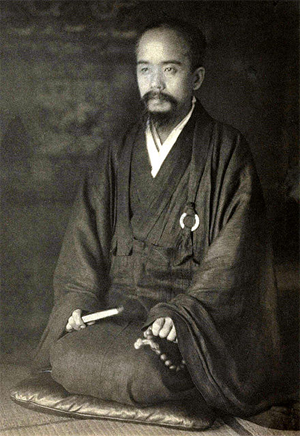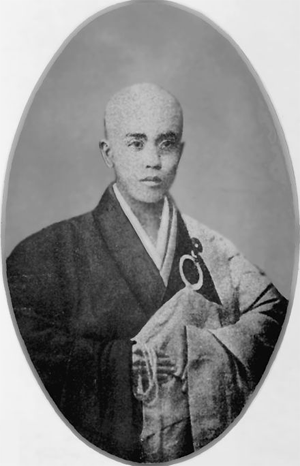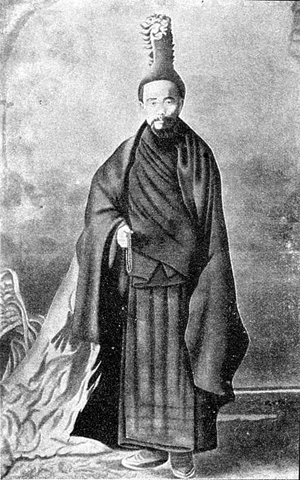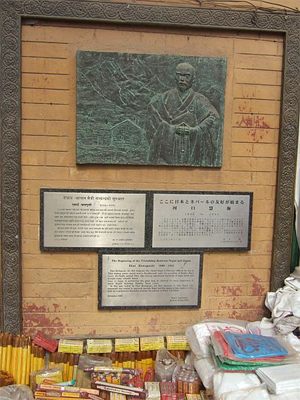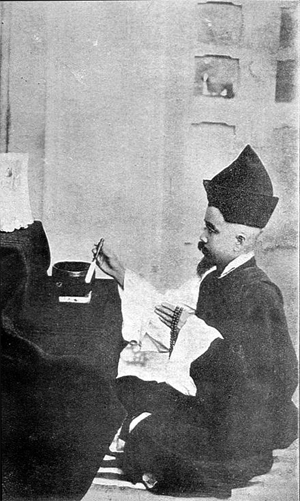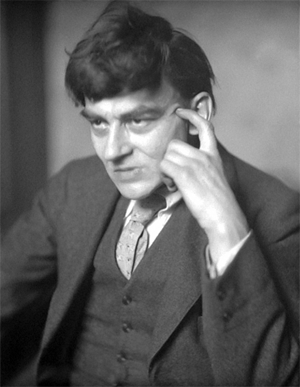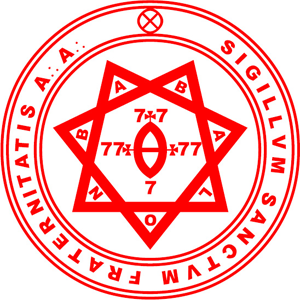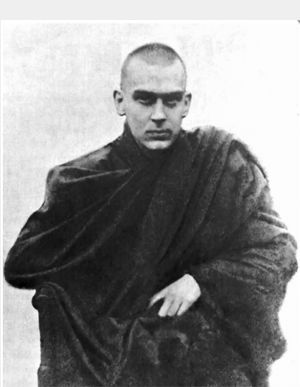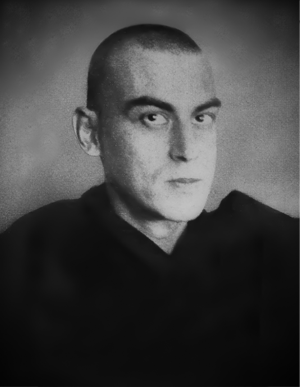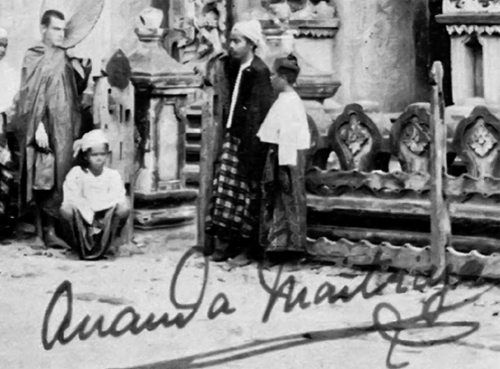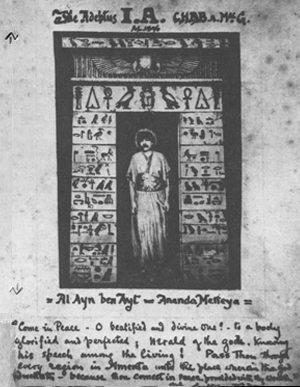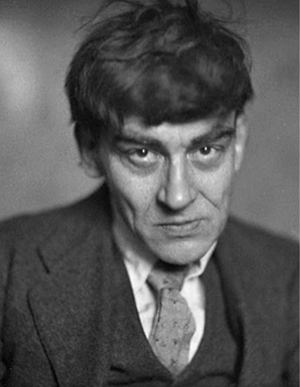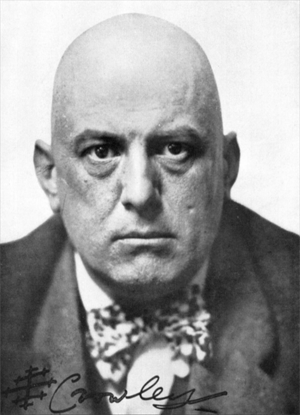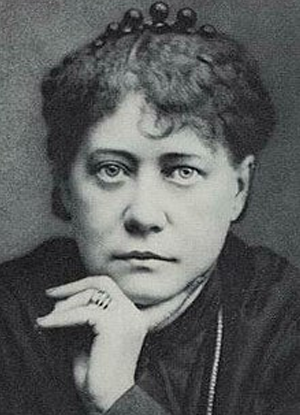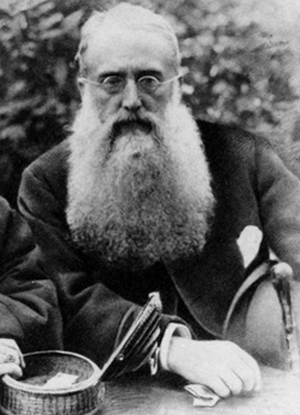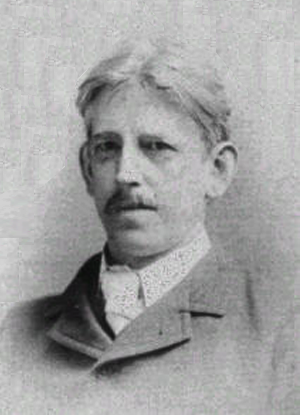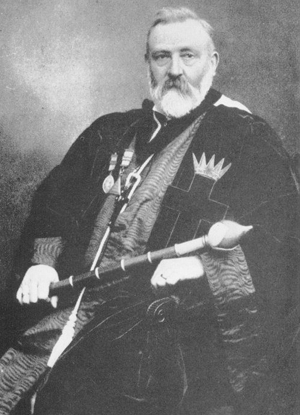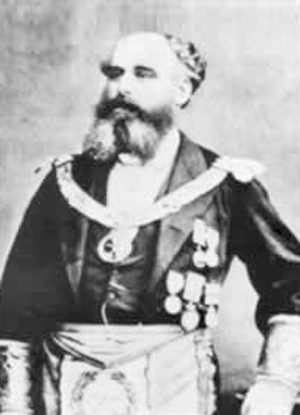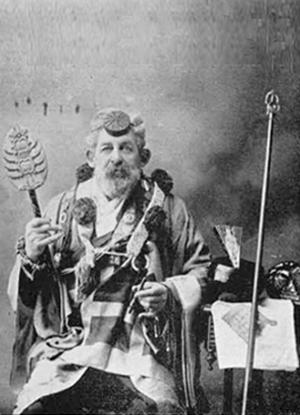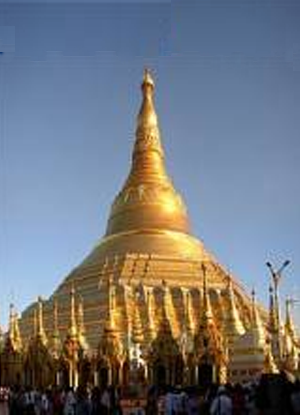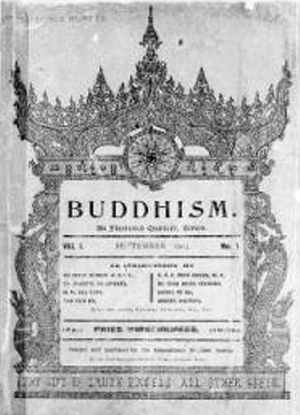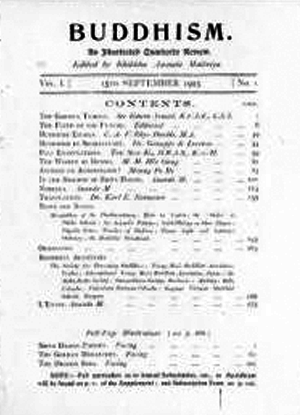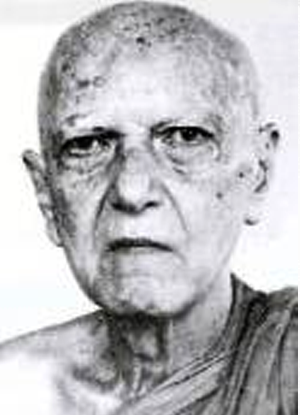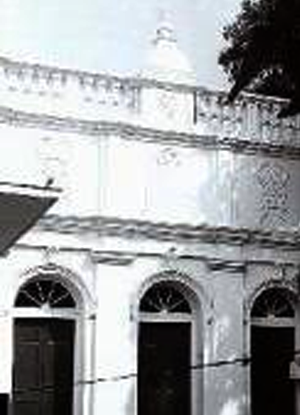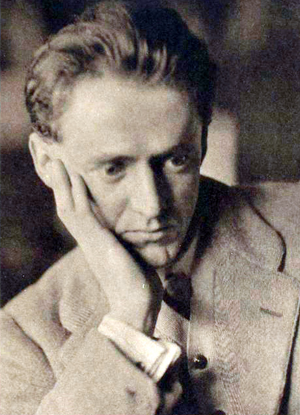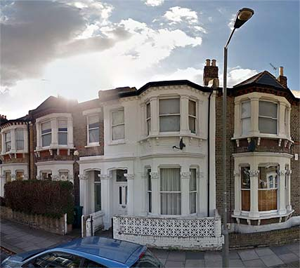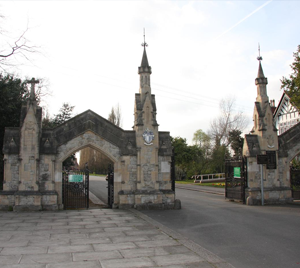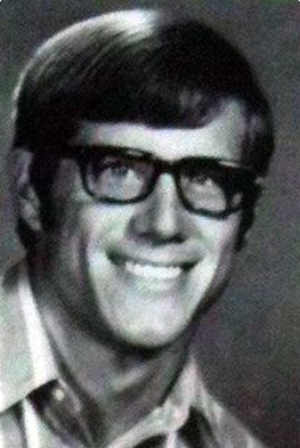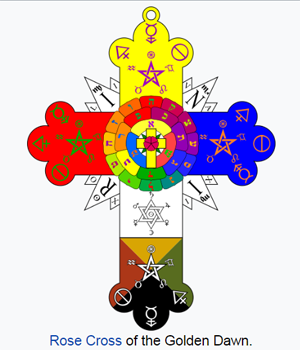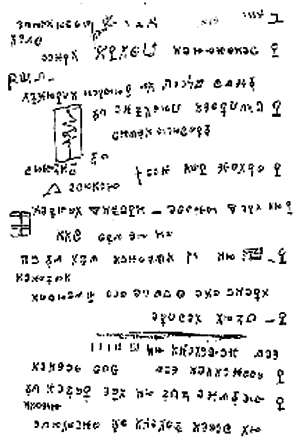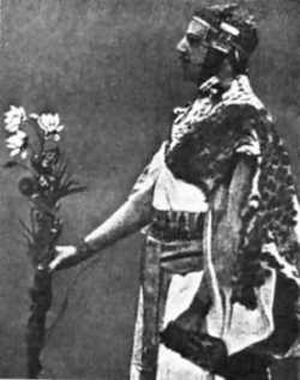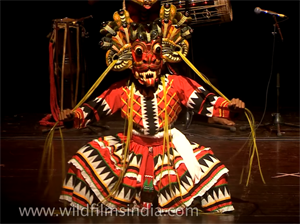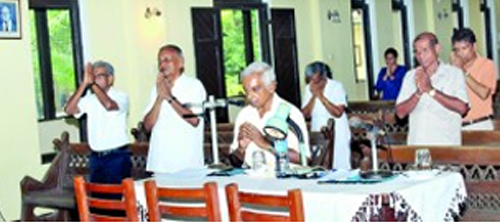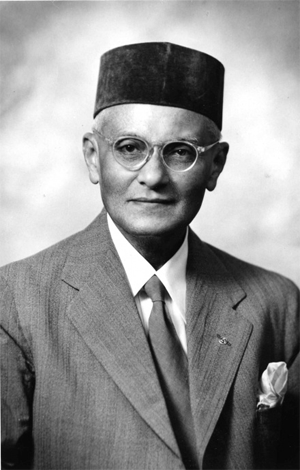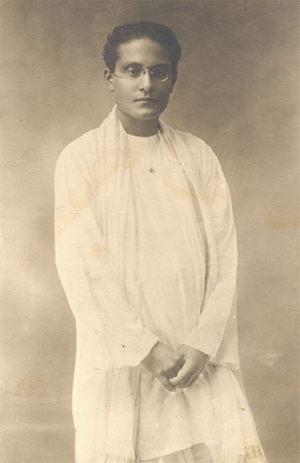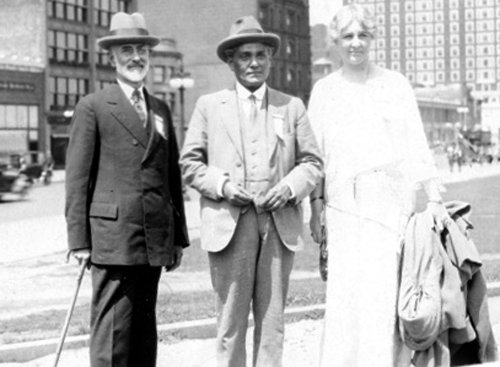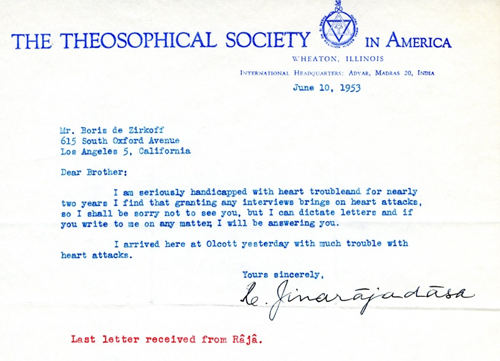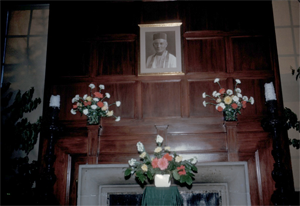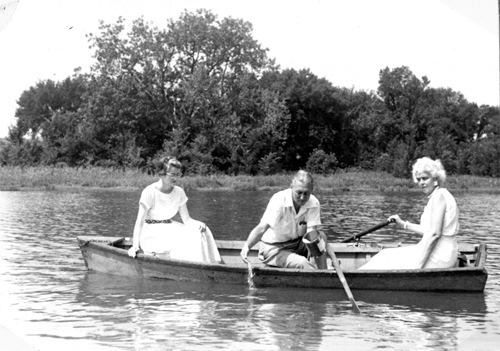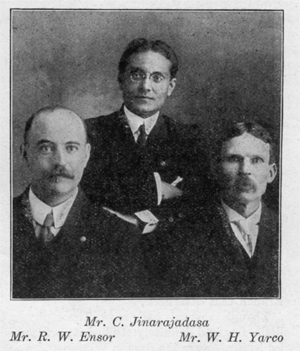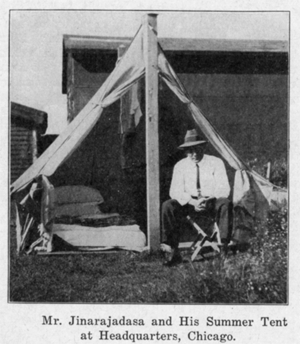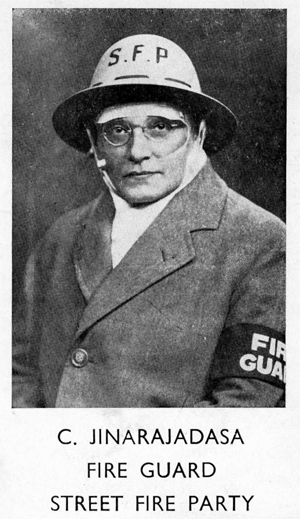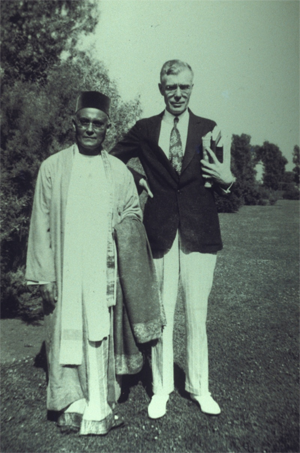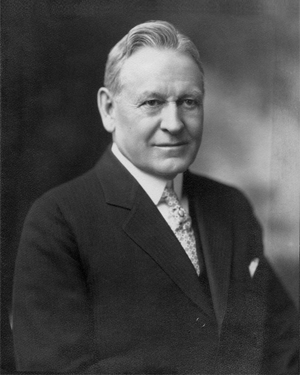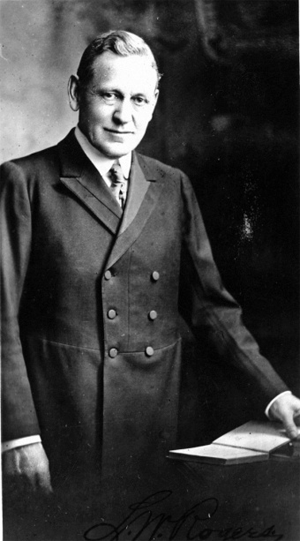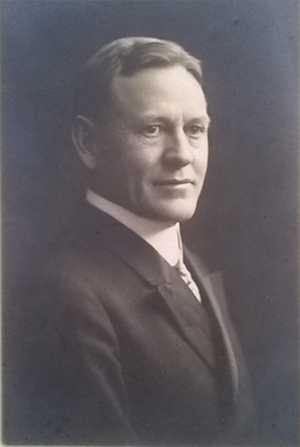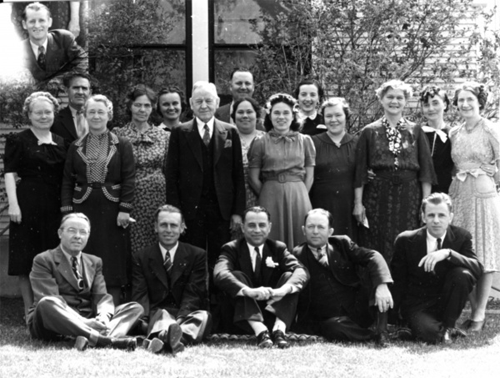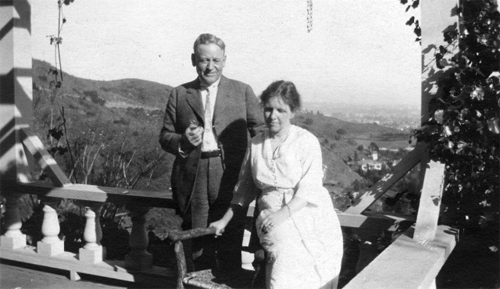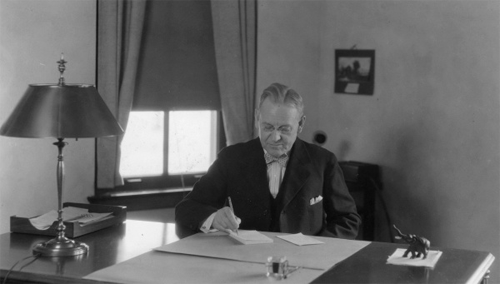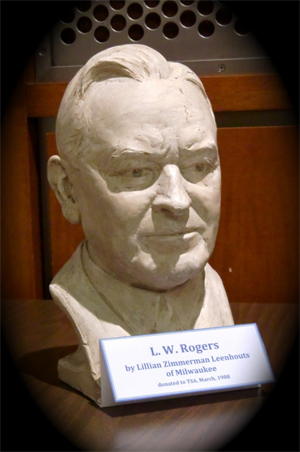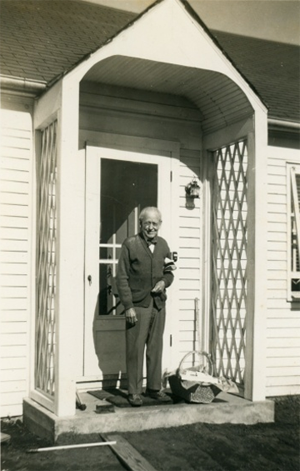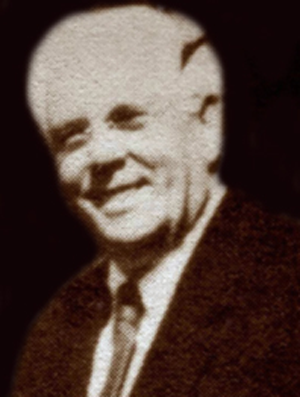Re: Freda Bedi, by Wikipedia
Part 1 of 2
Ekai Kawaguchi
by Wikipedia
Accessed: 10/16/19
NOTICE: THIS WORK MAY BE PROTECTED BY COPYRIGHT
Ekai Kawaguchi
by Wikipedia
Accessed: 10/16/19
NOTICE: THIS WORK MAY BE PROTECTED BY COPYRIGHT
YOU ARE REQUIRED TO READ THE COPYRIGHT NOTICE AT THIS LINK BEFORE YOU READ THE FOLLOWING WORK, THAT IS AVAILABLE SOLELY FOR PRIVATE STUDY, SCHOLARSHIP OR RESEARCH PURSUANT TO 17 U.S.C. SECTION 107 AND 108. IN THE EVENT THAT THE LIBRARY DETERMINES THAT UNLAWFUL COPYING OF THIS WORK HAS OCCURRED, THE LIBRARY HAS THE RIGHT TO BLOCK THE I.P. ADDRESS AT WHICH THE UNLAWFUL COPYING APPEARED TO HAVE OCCURRED. THANK YOU FOR RESPECTING THE RIGHTS OF COPYRIGHT OWNERS.
[O]n the 19th of July, I took passage on an English steamer, the Lightning, which, after calling at Penang, brought me to Calcutta on the 25th of the month. Placing myself under the care of the Mahābodhi Society of Calcutta, I spent several days in that city, in the course of which I learned from Mr. Chandra Bose, a Secretary of the Society, that I could not do better for my purpose than to go to Darjeeling, and make myself a pupil of Rai Bahadur Sarat Chandra Das, who, as I was told, had some time before spent several months in Tibet, and was then compiling a Tibetan-English dictionary at his country house in Darjeeling. Mr. Chanḍra Bose was good enough to write a letter of introduction to the scholar at Darjeeling in my favor, and, with it and also with kind parting wishes of my countrymen in the city and others, I left Calcutta on August 2nd, by rail.... By 3 p.m., the train had made a climb of fifty miles and then landed us at Darjeeling, which place is 380 miles distant from Calcutta. At the station I hired a ḍanlee, which is a sort of mountaineering palanquin, and, borne in it, I soon afterward arrived at Rai Sarat’s retreat, Lhasa Villa, which I found to be a magnificent mansion....
I was received there with a whole-hearted welcome. An evening’s talk was sufficient, however, to make my intentions clear to my kind host, and, as my time was precious, Rai Sarat took me out, the very next day after my arrival, to a temple called Ghoompahl, where I was introduced to an aged Mongolian priest, who lived there and was renowned for his scholarly attainments and also as a teacher of the Tibetan language. The priest was then seventy-eight years of age, and his name, which was Serab Gyamtso (Ocean of Knowledge), happened by a curious coincidence to mean in the Tibetan tongue the same thing as my own name Ekai meant.... Our talk naturally devolved upon Buddhism, but the conversation proved to be a rather awkward affair, for though Rai Sarat kindly acted the part of an interpreter for us, it had to be carried on, on my part, in very rudimentary English. As it was, the first day of my tutelage ended in my making the acquaintance of the Tibetan alphabet, and from that time onward, I became a regular attendant at the temple, daily walking three miles from and back to the Sarat mansion. One day, about a month after this, Rai Sarat had me in his room and spoke to me thus: “Well, Mr. Kawaguchi, I would advise you to give[12] up your intention of going to Tibet. It is a very risky undertaking, which it would be worth risking if there were any chance of accomplishing it; but chances are almost entirely against you. You can acquire all the knowledge of the Tibetan language you want, here, and you can go back to Japan, where you will be respected as a Tibetan scholar.” I told my host that my purpose was not only to learn the Tibetan language, but that it was to complete my studies in Buddhism. “That may be,” said my host, “and a very important thing it no doubt is with you; but what is the use of attempting a thing when there is no hope of accomplishing it? If you go into Tibet, the only thing you can count upon is that you will be killed!” I retorted: “Have you not been there yourself? I do not see why I cannot do the same thing.” Rai Sarat’s rejoinder was: “Ah! That is just where you are mistaken; you must know that the times are different, Mr. Kawaguchi. The ‘closed door’ policy is in full operation, and is being carried out with the most jealous strictness in Tibet to-day, and I know that I will never be able again to undertake another trip into that country. Besides, when I made my trip, I had with me an excellent pass, which I was fortunate to secure through certain means, but there is no means, nor even hope, any longer of procuring such a pass. Under the circumstances I should think it is to your own interest to go home from here, after you have completed the study of the Tibetan language.”... I asked Rai Sarat to kindly devise for me some way, by which I might acquire[13] the vernacular Tibetan language. Finding me resolute in my purpose, Rai Sarat, with his unswerving kindness, cheerfully agreed to my request, and arranged for me that I should have a new private teacher, besides a regular schooling. It was in this way. Just below Rai Sarat’s mansion was a residence which consisted of two small but pretty buildings. The residence belonged to a Lama called Shabdung, who just then happened not to live there, but in a house in the business quarters of Darjeeling. Rai Sarat sent for this Lama and asked him to teach the “Japan Lama” the Tibetan language, the Lama returning to his residence just mentioned with his entire household. Lama Shabdung was only too pleased to do as was requested, and I was forthwith installed a member of his household, that I might have ample opportunity of learning the popular Tibetan language. On the other hand, I at the same time matriculated into the Government School of Darjeeling, and was there given systematic lessons in the same language by Prof. Tumi Onden, the Head Teacher of the language department of Tibetans in that School. I should not forget to mention here that, while I paid out of my own pocket all the tuition fees and school expenses, as it was quite proper that I should, I was made a beneficiary of my friend Rai Sarat so far as my board was concerned.... Indeed, I had only three hundred yen with me when I arrived at Darjeeling; but, as it was, that amount supported me for the seventeen months of my stay there. Had I had to pay my own board, I would have had to cut down my stay there to half the length of time....
To give one of Lama Shabdung’s favourite recitals about Tibet: my host, while there, studied Buddhism under a high Lama of great virtues and the most profound learning, called Sengchen Dorjechan (Great-Lion Diamond-Treasury), who had been the tutor of the Secondary or Deputy Pope, so to say, of Tibet. No man in Tibet was held in higher esteem and deeper reverence than this holy man. It was this holy man himself who taught my friend and benefactor Rai Sarat, when he was in Tibet. Though Rai Sarat’s pupilage under the high Lama lasted only for a short time, it had the most tragical consequences. For, after his return to India, the Tibetan Government discovered to its own mortification that Rai Sarat was an emissary of the British Government, and the parties who had become in any way connected with his visit, more particularly the man who had secretly furnished him with a pass, another in whose house he had lodged and boarded, and the high Lama, were all thrown into prison, the last named having afterward had to pay with his life for his innocent crime.
Many are the reminiscences of this holy Lama, which show that he was indeed a person very firm and enlightened in the Buddhist faith, and to that degree was the most lovable and adorable of men. But more especially affecting, even sublimely beautiful, are the episodes immediately preceding and surrounding his death, for the truth of which I depend not on the narrative of Lama Shabdung alone, but largely also upon what I was able to learn from persons of unquestionable reliability, during my disguised stay in the capital of[16] Tibet. To mention a few of these: when an unpleasant rumor had just begun to be circulated, soon after Rai Sarat’s departure from Tibet, about his secret mission, the high Lama Sengchen knew at once that death was at his door, but was not afraid. For, when it was hinted at by his friends that he would become involved in a serious predicament, owing to his acquaintance with Rai Sarat, he replied that he had always considered it his heaven-ordained work to try to propagate and to perpetuate Buddhism, not among his own countrymen only, but among the whole human race; that whether or not Saraṭ Chanḍra Das was a man who had entered Tibet with the object of “stealing away Buddhism,” or to play the part of a spy, was not his concern—the question had in any case never occurred to him—and that if he were to suffer death for having done what he had regarded it as his duty to do, he could not help it. That this holy Lama was an advocate of active propagandism may be gathered from the fact that, besides sending various Buddhistic images and ritualistic utensils to India, he had caused several persons to go out there as missionaries, my teacher, the Manchurian Lama Serab Gyamtso, in the Ghoompahl Temple of Darjeeling, being one of these. Unfortunately, this undertaking did not prove a success, but none the less it shows the lofty aspirations which actuated the high Lama, who, as I was told, had deeply lamented the decadence, or rather the almost entire disappearance, of Buddhism in the land of its origin, and was sincerely anxious to revive it there. It is nothing uncommon in Japan to meet with Buddhist priests interested in the work or idea of foreign propagandism; but a person so minded is an extreme rarity in that hermit-country Tibet, and that Lama Sengchen was such a one indicates the greatness of his character, and that he was a man above sectarian differences and inter[17]national prejudices, solely given to the noble idea of universal brotherhood under Buddhism. Being the man he was, he had many enemies among the high officials of the hierarchical Government, who were in constant watch for an opportunity to bring about his downfall. To these, his enemies, the rumor about Prof. Sarat was a welcome one, which they lost no time in turning to account. In all haste they despatched men to Darjeeling, and ascertained that, in truth, Rai Sarat had smuggled himself into and out of Tibet, and that, as the fact was, he had done so at the request of the British Government of India. Then followed the incarceration, already mentioned, of all those who had had anything to do with Rai Sarat, the final upshot of which was sentence of death upon the high Lama Sengchen Dorjechan, on the ground that the latter had harbored in his temple, and divulged national secrets to, a foreign emissary....
I spent the twelve months following in closely devoting myself to the study, and in efforts at the practical mastery, of the Tibetan tongue, with the result that, toward the close of the year, I had become fairly confident of my own proficiency in the use of the language both in its literary and vernacular forms; and I made up my mind to start for my destination with the coming of the year 1899. Then, it became a momentous question for me to decide upon the route to take in entering Tibet....
It appeared to me, further, that the route most advantageous to me would be by way of Nepāl; for Bhūṭan had never been visited by the Buddha, and there was there little to learn for me in that connexion, though that country had at one time or another been travelled over by Tibetan priests of great renown; but the latter fact had nothing of importance for me. I had been told, however, that Nepāl abounded in the Buddha’s footsteps, and that there was in existence there complete sets of the Buddhist Texts in Samskrt. These were inducements which I could turn to account, in the case of failure to enter Tibet. Moreover, no Japanese had ever been in Nepāl before me, though it had been visited by some Europeans and Americans. So I decided on a route viâ Nepāl.
The decision made, it would have been all I could wish for, if it were possible for me to journey to Nepāl direct from Darjeeling; there was on the way grand and picturesque scenery incidentally to enjoy, besides places sacred to Buddhist pilgrims. But to do so was not possible for me, or at least implied serious dangers. For most of the Tibetans living in Darjeeling—and there were quite a number of them there—knew that I was learning their language with the intention of some day visiting their country; and it was perfectly manifest that the moment I left that town with my face towards Tibet, they, or some of them at the least, would come after me as far as some point where they might make short work of me, or follow me into Tibet and there betray me to the authorities, for they would be richly rewarded for so doing. To meet the necessity of the case, I gave it out that, owing to an unexpected occurrence, I was obliged to go home at once, and I left Darjeeling for Calcutta, which place I reached on the 5th of January, 1899. I, of course, let Rai Sarat into my secret, and he alone knew that the day I left Darjeeling I started on my Tibetan journey in real earnest, though back to Calcutta I took fare in sooth. On leaving Darjeeling, my good host Rai Sarat Chanḍra earnestly wished me complete success in my travels to Tibet, and gave vent to his hearty and sincere pleasure in finding in me one, who, as bold and adventurous as himself, was starting on a perilous but interesting expedition to that hitherto unknown country.
***
About a fortnight after my arrival in Malba I received a letter from Rai Sarat Chandra Das, through a trader of Tukje, with whom I had become acquainted while in Tsarang, and to whom I had entrusted a letter to my friend at Darjeeling, as well as others to my folks at home, on the occasion of his going down to Calcutta on business. Along with his letter Sarat Chandra Das sent me a number of the Mahabodhi Society’s journal, which contained an account of an unsuccessful attempt by a Buddhist of my nationality to enter Tibet, and a well-meant note of his in pencil to the effect that I must not lose my life by exposing myself to too much danger. So far so good; but next something which was not so good happened. The Tukje man, my whilom messenger, had[66] apparently formed an opinion of his own about my personality, and set the quiet village of Malba astir with rumors about myself. Chandra Das was an official of the English Government, with a salary of 600 rupees a month, and, as such, a very rare personage among Bengālīs; and it was with this person that I corresponded; ergo, the Chinese Lama (myself) must be a British agent in disguise, with some secret mission to execute. So went the rumor, and the public opinion of Malba had almost come to the conclusion that it was undesirable to permit such a suspicious stranger in the village, when Adam Naring, who by that time had come home, sought to speak to me in secret, with indescribable fear written on his face. Poor honest soul! What he said to me, when by ourselves, was of course to the effect that if there were any truth in the rumor, he and his folks would be visited with what punishment heaven only knew. I had expected this for some time past, and had made up my mind how to act as soon as Naring approached me on the subject. I turned round and, looking him squarely in the face, said: “If you promise me, under oath, that you will not divulge for three full years to come what I may tell you, I will let you into my secret; but if you do not care to do so, we can only let the rumor take care of itself, and wait for the Nepāl Government to take any steps it may deem fit to take.” I knew Adam Naring was a man of conscience, who could be trusted with a secret: he signified his willingness to take an oath, and I placed before him a copy of the sacred Scripture and obtained from him the needed promise.
Producing next my passport, given me by the Foreign Office in Japan, which had on it an English as well as other translations of the Japanese text, I showed it to my host, who understood just enough English to follow out the spelling of some words in that language, and[67] explained to him the real object of my journey into Tibet. I did more. I said to him that now that he possessed my secret, he was welcome to make of it what use he liked; but that I believed him to be a true and devoted Buddhist, and that it behoved him well to assist me in my enterprise by keeping silence, for by so acting he would be promoting the cause of his own religion. In all this, I told my host nothing but truth, and truth triumphed; for he believed every word I said and approved of my adventure. Then we talked over the route I was to take, and it was arranged at the same time that I should restart on my journey in June or July.
***
Gya-karko is a trading port for people coming from the north-west plains of Tibet on the one hand and the Hindūs inhabiting the Indian Himālayas on the other, who are allowed by the Tibetan Government to come as far as this place.
Here I saw many merchants from the towns and villages of the Himālayas. Among them was one from Milum, who spoke English. This man invited me to dinner on the quiet, so to say. I accepted his invitation, but the moment I had entered his tent I at once saw that he took me for an English emissary. When left to ourselves he immediately addressed me thus: “As I live under the government of your country, I shall never make myself inconvenient to you. In return I wish you would do what you can to help my business when you go back to India.” I thought that these were very strange words to speak to me. On interrogating him, I found out that he had conjectured that I was engaged in exploring Tibet at the behest of the British Government. When I told him that I was a Chinaman, he said: “If you are Chinese, you can no doubt speak Chinese?” I answered him boldly in the affirmative. Then he brought in a man who claimed to understand Chinese. I was not a little embarrassed at this turn of affairs, but as I had had a similar experience with Gya Lama in Nepāl it took me no time to recover sufficient equanimity to answer him, and I felt much re-assured when I found that he could not speak Chinese so well as I had anticipated. Then I wrote a number of Chinese characters and wanted him to say if he knew them. The man looked at me and seemed to say: “There you have me.” Finally he broke into laughter and said: “I give up; let us talk in Tibetan.” Then my host was greatly astonished and said: “Then you are indeed a Chinaman! What can be better? China is a vast country.[154] My father, who is now living in my native country, was once in China. If there is any business to be done with China I wish you would kindly put me on the track;” and he gave me his address written in English. His manner showed that he was in earnest, and that he was a man to be trusted. So seeing that this man was going back to India, I thought it would be a good idea to ask him to take with him my letters and deliver them for me in India. It would have been imprudent for me to write things in detail, but I scribbled just a few lines to my friend and teacher, Rai Sarat Chandra Das, informing him that I had penetrated the interior of Tibet as far as Gya-karko, besides asking him to post some letters for Japan which I enclosed, addressed to Mr. Hige Tokujuso and Ito Ichiso of Sakai. A few coins put into the hand of the Milum man secured a ready response to my request. The man proved the honest fellow I took him for; for after my return to Japan I found that my letters had been duly received by both Mr. Hige and Mr. Ito.
***
The usual lessons in the Tibetan grammar and Buddhism over, the suspicious monk, who posed for a learned scholar, suddenly addressed me, saying that having been in India, I must have seen Sarat Chandra Das, who explored Tibet. I replied that I did not know him, even by name. There were three hundred millions of people in India, and however famous a man might be, he must always be unknown to some. There was a great difference between India and[224] Tibet, and I asked to hear something about the man the monk referred to. The monk then narrated how Sarat Chandra Das, twenty-three years ago, had cheated the Tibetan authorities with a passport; how he had robbed Tibet of her Buddhism, with which he had returned to India; how on the discovery of the affair, the greatest scholar and sage in Tibet, Sengchen Dorjechan, had been executed, not to mention many other priests and laymen who were put to death and many others whose property was confiscated.
After this the monk added that as Sarat Chandra Das was a renowned personage in India, it was impossible for me not to be acquainted with him. Probably I pretended not to know him. These words were spoken in a most unpleasant manner, but I put him off with a smile, saying that I had never seen the face of the Queen of England, who was so renowned, and that such a big country as India made such investigations hopeless. The stories about Sarat Chandra Das are quite well known in Tibet, even children being familiar with them; but there are few who know him by his real name, for he goes by the appellation of the ‘school bābū’ (school-master). The story of the Tibetans who smuggled a foreigner into Tibet and were killed, and of those who concealed the fact from the Government and forfeited their property, are tales that Tibetan parents everywhere tell to their children.
Owing to the discovery of the adventures of Sarat Chandra Das, all the Tibetans have become as suspicious as detectives, and exercise the greatest vigilance towards foreigners. I was fully acquainted with these facts, so that I too exercised great caution even in dropping a single word, however innocent and empty that word might be. But the Tibetans were very cunning questioners; and the monk was one of the most cunning. When I tried to laugh away his questions, he put other queries on every imaginable point. Other Tibetans who were[225] equally suspicious joined him in harassing me. I felt for the moment just as though I were besieged by an overwhelming force of the enemy.
***
At dawn I climbed up the mountain in deep snow, and looked down upon the surface of the lake. I could see among the shadows of the mountains the crescent moon beautifully reflected dimly and faintly on the water. The bright day was soon coming, the moon began already to lose its dim light, and the morning star twinkled on the surface of the water. Amid the charms of nature I lost all my fatigue and weariness, and I stood quite entranced. Soon the water-fowl were heard on the sands along the lake, and some mandarin ducks were amusing themselves in the water, while cranes were wildly flying about[278] with noisy cries. What a contrast it was with the scene of the day before! No pleasure on a journey can be greater than travelling in this way at dawn. I still went on for about twelve miles along the lake and came to a little stream in the mountains at about nine o’clock. It is here that travellers make tea, and bake their wheat for eating. The lake is full of water, but it is poisonous.
A strange story is told about how it turned poisonous. About twenty years ago, as the Tibetans tell, the famous Sarat Chandra Das, an Indian by birth, who passed for an Englishman, came from India and pronounced a spell upon the lake; the water at once turned as red as blood. A lama, they say, came along and turned the water back to its original color, but it still remained poisonous. One cannot believe anything that the Tibetans say, but the water seems to have really turned red. Sarat Chandra Das cannot have done that, but, unfortunately for him, it was just after his return from Tibet that the water thus changed. Sarat Chandra Das, as every one knows, is an Indian, but Tibetans, with few exceptions, think him to be an Englishman. Any way the water of the lake must have been poisonous for a long time, for the water is stagnant, there being no current, and there are divers poisonous elements near the lake.
***
As my object was to be a student priest I bought a hat, a pair of shoes, and a rosary, according to the regulations of the monastery. I did not buy a priest’s robe, as I could in time use the one which had been given to me. So I went to Je Ta-tsang, chief professor of the department which I was to enter, for him to question me before I was admitted as a probationary student; but I found that no examinations were to be given. I called on the professor with a present of the best tea to be procured in Tibet. His first question was: “Where are you from? You look like a Mongolian; are you not one?” Being answered in the negative, he asked me several geographical questions, for he was well acquainted with the geography of the country. But I answered well, as I had travelled through the provinces on my own feet. It was thus settled that I might be admitted on probation....
On the following day I found a teacher to help me in my preparation. Finding however that one teacher was not sufficient for the many subjects I had to study, I engaged a second, and I was thus soon busy preparing myself. There was a Lama living in the dormitory opposite to mine, a stout priest who seemed to be very learned. One day I was called to his room to see him, and among other questions I was asked if I had not come with a caravan of Ruto from Jangthang to the Sakya temple. I was told that among the disciples of the Lama there was one Tobten, a nice gentle Tibetan, and this person happened to be the one who had treated me very kindly during my journey with the caravan. It was this man who had asked me if I would take meat, and whom I had told that I did not take it. I had hitherto been supposed to have come from Jangthang, but now I was entirely unmasked.
“Then you are not from Jangthang,” said the Lama, and then he told me that he had heard I was a Chinaman and good at writing Chinese characters. On my confessing that I was not a Tibetan he was grieved, because he feared that my deceit might bring trouble upon the dormitory, for a Chinaman must go to Pate Khamtsan. He then asked me why I had violated the regulations of the place, and I replied that I had been robbed, as he might have heard from his disciple, at Jangthang, and that I had not money[296] enough to enter into the Pate Khamtsan as a Chinaman. Besides, I said, I should have to pay something for service every year, if I went to the Chinese house. Having told him all these secrets, I then asked him to help me to stay with him, as I could not go to the other house. The Lama said that his disciple had told him of the robbery, and that he was very sorry for me, adding that he would leave the matter till objection should be made. So I was left there without further trouble, and I passed for a man from Jangthang.
***
In the capital I got more definite information about the Boxer trouble. Perhaps some merchants who had returned from China, or some who had came from Nepāl or some who had been to India, might have brought the news; but it was all very laughable and unreliable. Some would say the Emperor of China had bequeathed his throne to the Crown Prince and absconded, while others told me that the Emperor was defeated and was then in Sin-an. The trouble was brought about, some said, by a wicked minister, who married an English lady to the Emperor, while others asserted that there was a country called Japan, which was so strong that her troops took possession of Peking. Another said that a famine prevailed in China and people were all famished; indeed, every sort of rumor was abroad in the Tibetan capital.
I was especially pleased to hear something about Japan, even the very name of which had not yet been heard in Tibet, and some merchants told me that Japan was so powerful and so chivalrous that even when her army had taken possession of Peking, she had sent shiploads of rice, wheat and clothing to the Chinese capital to relieve tens of thousands of natives who were suffering from famine. But others would say against Japan that she could not be such a friendly country, but must have done what she had done merely out of her crafty “land-grabbing diplomacy,” as the British nation did. Rumor after rumor was making its way through Tibet, and I did not know what to believe. Only I was pretty sure that a war had broken out between China and[300] other Powers. In the meantime the Palpo merchant with whom I was staying was going to Nepāl. I utilised the occasion and through his kindness sent two letters, one to Rai Sarat Chandra Das in India, and the other to Mr. I. Hige of my native province. I was glad to find afterwards that they reached their destination, but it was very difficult to send a letter in that way; one must first see that the man by whom it is to be sent is honest and not likely to betray one’s secret, and one cannot easily trust a Tibetan. But my Tibetan had more than once been shown to be true to his trust.
***
The last exploration I would mention here is that undertaken in 1881 and 1882 by Sarat Chanḍra Das, my own teacher, of whom mention has been made several times already. This Hinḍū had obtained in a very ingenious way a pass from the Tibetan Government, and, armed with it, he first proceeded as far as Shigatze, where he remained for two months; after awhile he returned to India. That was in 1881. The result of his exploration was reported to the British Government, and he was for a second time asked to undertake another trip into Tibet in the following year, having secured as before a Tibetan passport. On his second visit he first reached Shigatze and afterward entered Lhasa. As I heard from a Tibetan, he conducted his mission with extreme caution, seldom venturing abroad in the daytime, and when obliged to do so he took every care to avoid attracting the attention of the natives. He spent most of his time in a room of a temple, and there secretly carried[403] out his investigations. In this way he stayed in Lhasa for twenty days; then he went back to his sphere of work in other parts of Tibet and at last returned to Darjeeling after an absence of less than a year.
I have mentioned, in a preceding chapter that when the real nature of the mission of Sarat Chandra Das had become known to the Tibetan Government, it caused extraordinary disturbance, involving all the officials who had been on duty at the barrier-gates through which the Hinḍū had passed, as well as all the persons who had extended any sort of hospitality to him during his stay in the country. All these persons were thrown into prison and their property was confiscated. A number of those whose complicity, unwitting though it was, was judged more serious than that of the others were condemned to death and executed. After this memorable occurrence, Tibet resolved more than ever to enforce strictly the policy of exclusion against all foreigners....
Besides the attempts at Tibetan exploration already referred to, there have from time to time been a number of missionaries or spies despatched by either Russia or England, who have frequently appeared at Tibetan frontier stations only to arouse the suspicions of the Grand Lama’s Government, until the latter has become irrevocably committed to the policy of absolute seclusion. To do justice to the Tibetans, they were originally a people highly hospitable to strangers. This sentiment was superseded[405] by one of fear and even of antipathy, as the result of an insidious piece of advice which, probably prompted by some policy of its own, the Government of China gave to Tibet; it was to the effect that if the latter allowed the free entrance of foreigners into her territories, they would destroy her Buddhism, and replace it with Christianity. The simple-minded Tibetan became dreadfully alarmed at this warning; but even then he did not all at once put the policy of exclusion into full force. The absolute exclusion dates from the discovery of Sarat Chanḍra Das’ mission. Since then, the enforcement of the exclusion policy has become so strict that it now seems as though Tibet has been converted into a nation of detectives and constables.
***
I shall begin with an interesting incident that occurred to me in November, 1901, when I was enabled to send home letters for the first time after my arrival in the country. That was on the 18th of the month, and through the agency of Tsa Rong-ba, a Tibetan trader with whom I had become acquainted at Darjeeling. This man started for Calcutta on Government business to buy iron, and as I knew him to be trustworthy I entrusted him with a letter addressed to Sarat Chandra Das, in which were enclosed several others addressed to my friends and relatives in Japan.
The iron which he was commissioned to procure was for the purpose of manufacturing small arms at an arsenal situated at Dib near Che-Cho-ling, on the bank of the river Kichu, which flows to the south of Lhasa.
This industry was an innovation in Tibet, and in fact had begun only about eight years before that time. It was introduced by a Tibetan named Lha Tse-ring who had lived for a long time at Darjeeling and, at the request of his Government, brought back with him about ten gunsmiths, mostly Hindu and Cashmere Mohamedans. Only two of these smiths remained in Tibet at the time I reached Lhasa, the rest having returned home or died; but as several of the Tibetan smiths had acquired the art from them, no inconvenience was experienced in continuing the industry. This was a great improvement on the old state of affairs, for Tibet had formerly possessed only flint-lock muskets, and even these could not easily be[448] introduced from India. The manufacture of improved firearms was therefore a great boon to the country, and the Government did not spare expense and trouble to encourage the development of the art. Hence it came about that my acquaintance was authorised by the Government to proceed to Calcutta and procure a supply of iron.
***
The Choen Joe, who was keenly gazing at me, suddenly cried out: “You are very strange,” to which I did not reply a word. Then he continued: “At first I thought you were a Mongolian, but I found my judgment mistaken. Nor are you to be taken for a Chinaman. Of course, you are not a European. Of what nationality in the world are you then?” I was about to reply to this impertinent question, when I was interrupted by Tsa Rong-ba who spoke in a knowing way: “This gentleman is a Japanese.” Just a few words, and all was over. It was the first time my nationality had been mentioned in Lhasa. A very annoying truth had been uttered, but I could not deny the impeachment, so continued silently looking into the chief’s face, and wondering what would be the next word I should hear from him. Then with a look as if relieved from some uneasiness he turned to the host and said:[571] “I see, I see, I thought he must be a Japanese, but then I thought it was impossible for a Japanese to penetrate into this country, and I hesitated to say so. Now that I hear you say so, I doubt it not, for I have seen many Japanese at Peking.”
The sentence was given by these judges before the defendant could speak a word, and thus the secret which had been kept for so long was brought to light in a moment. The Choen Joe now turned to me and said:
“This is very good news for me. I once thought that if I went to Japan and brought strange goods to Lhasa I could make a great deal of money. But I have heard that the Chinese language, which is the only foreign language I can speak, is not used in Japan except among a few Chinamen at the seaport towns. Besides, I know that foreign travellers are liable to be deceived by bad people, who abound everywhere, and Japan, I suppose, is not an exception. So I have abandoned my intention. But I am glad to find here such a good Japanese as you. I have heard of the fame of the Serai Amchi (doctor of Sera) and am very satisfied to find the noted doctor in this house. As you are so good a man will you not take me with you to Japan?”
The prospect was not so bad as I had expected. I told him that as I intended to go back to Japan once more, I would take him, and spoke many things about Japan. The caravan chief talked of his hard experiences in China, of the recovery of his goods by the favor of the general, and of the superiority of the Japanese soldiers in valor to those of the West. He spoke very highly of Japan, but did not seem to mean to flatter me; it was most likely that the words came from his real heart. Then I said:
“You and Tsa Rong-ba are the only men that know that I am a Japanese, but if you tell it to anyone else, I am afraid it may cause you both some trouble. So you must be very careful about it.”
***
CHAPTER XCII. My Tibetan Friends in Trouble.
I learned that a month had hardly passed after my escape from Lhasa, when many of my acquaintances were arrested and imprisoned. According to this information, the ex-Minister of the Treasury with whom I lived, the old nun living in his house, and one of his favorite servants, were arrested and taken to prison; the new Treasury-minister was set free, as he had not had much relation with me; the Sera Seminary was closed, Tsa Rong-ba and his wife and Takbo Tunbai Choen Joe were taken to jail and examined with terrible tortures; every house which I had frequented was closely observed by the detectives, and the people in them were expecting every moment to be arrested; therefore everybody who had had any connexion whatever with me was endeavoring to conceal it, and consequently bribery was prevalent in Lhasa. Such were the stories I heard from the caravan, but the Tibetans are great story-tellers in general, and are very fond of surprising people by lies. So I thought they might be productions of their imagination, derived from the rumor that I escaped from Lhasa, and I did not give them much credit, and told them they were absurd stories; but still I had some doubts.
Some story of this kind reached the ear of the Magistrate of Darjeeling. One day he called me to his private house and asked me several questions as to the number of the priests, and the educational system, and the regulations of the Sera Monastery, and whether there was any law by which a school could be closed for such occurrences as had happened and whether I believed the stories. To this last question I answered negatively, because not only the Tibetans, but even the Chinese in Tibet, are very often fond of exaggerating truths and circulating rumors at Darjeeling; for instance, they say Russians have been seen striding along the streets of Lhasa in broad daylight, while in fact there are none, but only a Mongolian employed by the Government of Russia.
The local English officers of these districts are very desirous of knowing anything about Tibet, and they would write down any tidings brought thence, not distinguishing whether they are true or not. At Ghoom there is an officer whose special business it is to enquire into anything occurring in Tibet. If there is anyone newly arrived from that country, he would see him, ask various questions, and if he found any important news he would take the man to the Governor’s to enquire more minutely about the matter in his presence. The present Governor of Darjeeling can speak the Tibetan language to some extent, but not with much ease; so interpreters are hired in most cases. But the British Indian Government greatly encourages these Governors of the districts adjoining Tibet to study the Tibetan language, and they can take an examination if they are able to speak colloquial Tibetan and explain easy composition; and if they pass the examination they can obtain a prize of a thousand rupees. Therefore most of them study Tibetan. From these facts the reader may infer with what caution the British Government is trying to get insight into the Forbidden Land.
As I knew well that the Tibetans were liars, I did not much mind their talk, but when another caravan which came two weeks later brought similar rumors my uneasiness was greatly increased. Some days after a merchant of my acquaintance came to Darjeeling, so I went to see him and asked him whether these rumored stories were true.
“Not exactly,” said he, “things are not so bad as that. It is true that the ex-Minister of the Treasury was once arrested, but he was set free without being taken to prison. However they say he will be again arrested in the near future. When I started from Lhasa he dwelt in his residence, not in prison; but I cannot tell what may have happened since. Among those who are sure victims are your tutor and your security at the Sera Seminary, Tsa Rong-ba and his wife, Takbo Tunbai Choen Joe. Their torture is terrible indeed; they are to be flogged every day, receiving three hundred blows daily with a willow stick. We wished to pay them a visit, and do something for them, but could not do so; for if we did, it would only arouse the suspicion of the detectives, who were hunting after anything they could get hold of.”
When I heard him I wondered what necessity there was for such cruelty if it got out that I was a simple Japanese priest, and asked the merchant whether he knew the cause of the persecution. Then he said that they took me for an English spy and not for a Japanese.
“But then,” said I, “did any one tell them that I was an Englishman?”
“Yes, some one did,” said he. “In an official report Chyi Kyab, the chief Guard of Nyatong, has stated to the Pope that the Lama who was rumored to be a Japanese was in truth an Englishman and brother to a high official of the British Indian Government, by whose request he entered Tibet in the disguise of a Japanese or Chinese. He also stated that the disguised English spy had, while in Tibet, several communications from Darjeeling through Tsa Rong-ba and Takbo. Furthermore, the report says you are by no means an ordinary man and can work miracles. It says you did not come through the barrier on the highway, and that even the bye-ways were watched with equal care, so that you could not have passed through. It is said that you must have flown to this side of the mountains when you came to the neighborhood of the barriers. Since the report was read by the Pope, the persecution of the prisoners is said to have been severe.”
“By the way” he continued, “how did you come over from Nyatong? Did you not fly?”
“As I am no bird, how could I do such a thing?”
“But they say you can do such a thing,” said he, “and I am one of those who believe it, because for one who can revive the dead, it must be an easy miracle to fly in the air. In Tibet they all believe what Chyi Kyab has reported to the Pope.”
“Then,” said I, “I will show you one thing that tells more than my speech; it is the passport given by the order of Chyi Kyab himself.”
The merchant seemed not to believe me yet, for by this time even in Darjeeling the story that I could work miracles became current and he had heard of it. I think that this was caused by the fraudulent report of Chyi Kyab, who was afraid of the punishment which was likely to befall him if he made a true one. Sometime later when the merchant came to my place, I showed him the passport and he seemed to believe it. But a new suspicion arose that I must have enchanted Chyi Kyab by magic and stolen the passport. Ignorant people very often take a truth for a miracle; and many Tibetans are no exception.
I could not be calm now that I had heard such terrors were raging in Tibet. In the first place, the ex-Treasury-minister’s fate caused me much uneasiness. His acute and strong character made him many enemies among his mean fellow-countrymen, who might now find an opportunity of revenging themselves upon him. Tsa Rong-ba and his wife, my tutor at the Sera Seminary and my security there, all of whom had shown me much favor and kindness, were now suffering in chains; how could I sleep in peace? How I wished I had been able to fly as they said I could, and go to Lhasa to their rescue! Many considerations came to my mind as to the way of delivering them; but only two of them seemed to be practicable. The one was to go to Peking and to secure an order from the Chinese Government to the Tibetan to suspend the hideous cruelty, and the other was to go to Nepal and ask the help of the Nepalese Government. It took me a long while to decide which method I should choose, but at last I determined to try the latter.
First, it was doubtful whether the Chinese Government would admit any application, either from myself or through the influence of the Japanese Government. In the second place, China herself has ceased to have credit in Tibet. In Tibet it is believed, even among the Government officers, that the present Chinese Emperor has been married to an English lady, and that since then, as she is on good terms with England, the country is always disturbed. Besides they know that China has become so helpless that they can disobey her without being chastised. Lastly, the Tibetan Government does not like any diplomatic interference from China, because China is a country that proclaims herself as friendly with all foreign countries. On the other hand, Nepal is much feared by the Tibetans, for the people of Nepal are very strong, and their soldiers, disciplined in the English style, prove themselves very brave in time of war. So the Tibetans are trying not to offend her, and her advice is heard with more attention than that of China. What made me think of the greater probability of success through applying to the Nepalese Government was the fact that that country puts so much trust in Japan that she sends many students to Japan for study. Thus I was determined to go to Nepal.
To do this, however, some money was needed, of which I had none at that time; indeed, I had even some small debts. Thanks to heaven, help came in my need; my acquaintances at my native town were so kind as to collect and send me three hundred yen, and with this money I was ready to start. But there was one thing that held me back; it was the compilation of a Tibetan grammar, which I had sometime ago begun at the request of my teacher Sarat Chandra Das, who needed a complete grammar of the Tibetan language to append to his Tibetan-English dictionary. I began at once, and wrote some twenty pages, but the complete study of the grammar of a foreign language is not to be compared to writing compositions for papers or magazines; books must be referred to and the opinions of others must be consulted. And thus three months were spent, but the completion of the grammar proceeded at a very sluggish pace and I felt that it would take a year or more to finish it. But the present prison affair in Lhasa required my immediate exertion, otherwise all hope might be gone. So I told my teacher that I had to suspend the work, and towards the end of November I left Darjeeling and came to Calcutta.
-- Three Years in Tibet, with the original Japanese illustrations, by Shramana Ekai Kawaguchi, Late Rector of Gohyakurakan Monastery, Japan
